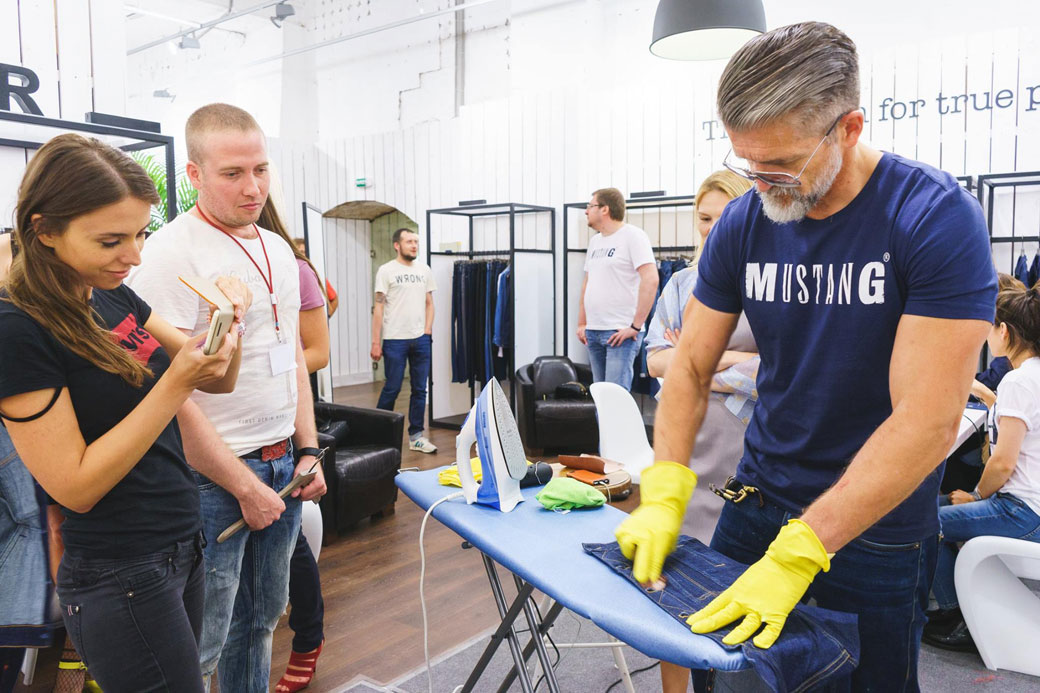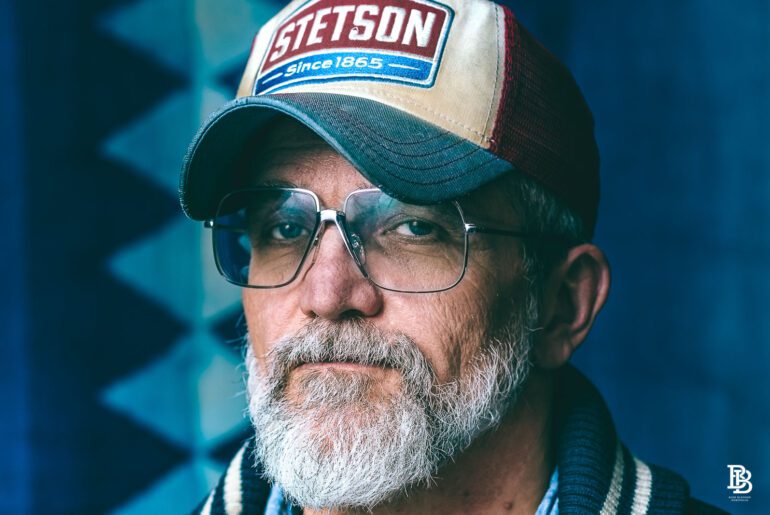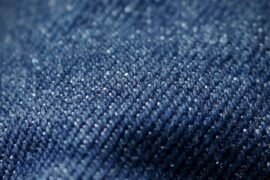This Blue Blooded Q&A series is a collaboration with Long John. The series is sponsored by Bluezone, the independent show for denim and sportswear by Munich Fabric Start. Register for the next show here!
Get to know Guido Wetzels, a face from the Blue Blooded Portfolio
In this Q&A, you’ll get to meet one of the unsung heroes of our industry. Guido is a denimhead through and through. But he also knows more about the technical side of denim than most of us.
Just like the previous Blue Blooded Q&As with Tilmann, Peter and Robin, Guido’s portrait here was shot by Brian Engblad for our Blue Blooded Portfolio.

What’s your story?
Name:
Guido Wetzels
Location:
Karlsruhe in the South of Germany
Profession:
Technical support for brands for wash/finishing issues on denim, prototypes, samples, bulk worldwide. My other job is being the co-founder of Blaumann Jeanshosen.
Instagram:
Guido’s path into the denim business
Thomas: How did you get into (the world of) denim?
Guido: After studying textile print and dyeing, I got a job offer from Mustang (German jeans brand). They were looking for a ‘jeans washing technician assistant’ to give technical support to their own facilities. At that time, this meant in Hungary, Russia and Portugal.
All you needed was a textile diploma—special denim knowledge was welcome but not a must, which was good because I had no f*cking clue about jeans. About indigo yes, that I learned, but that was all.
T: What was your first pair of jeans?
G: Afraid to say it, but I guess it was a Palomino, a private label brand from German retail giant C&A.
T: When did you know you were ‘hooked’ on raw denim?
G: Quite late. Due to my job visiting laundries all over the world, to me, ‘raw’ always meant “work to do, not finished yet.”
Over the years, the more I got into the technical details of how to turn raw items into artificially aged jeans, the more I got interested in doing that the only correct way; by wearing them frequently yourself.
Then it was a short step to raw selvedge jeans. One of my clients, who runs a denim mill in Asia, owns a huge range of shuttle looms, and from that time it was never again a non-selvedge and washed jean for me.
T: What is your favourite thing about raw denim?
G: The way the fabric changes week after week as you break them in. I’m still happy like a kid when I see the first whiskers and marks on a new project.

Guido’s views on the denim business
T: What‘s been the greatest challenge you’ve faced so far, and what did you learn from it?
G: Starting my own brand, Blaumann, which began with the crazy idea to see what’s possible in Germany. This was back in 2013.
With our contacts, it would have been easy to launch a small brand with small volumes somewhere in North Africa or Asia. But we decided to produce as much as possible in Germany.
The ambitious requirements were: cut and made in Germany, all fabric and trims made in Germany. Selvedge, classic handcrafted details, raw.
It wasn’t that easy to say the least. Fabric we could skip immediately from our list. No german denim weaver survived and nobody of them did ever selvedge.
Trims were still possible to source in Germany. The biggest problem was the manufacturing. That part drove us crazy.
The first pants looked like they were hand-stitching blindfolded. It was a desaster. After one year, we finally found a guy who was able to do it and who was also interested in doing it.
Nobody was really too serious about our project. Everybody kept telling us that there would be no market for locally produced jeans because they would too expensive.
T: Which denim brands inspire you? And why?
G: All brands that are into details and all brands with a history. Japanese brands all have both of it, the story and the details.
Hidden rivets, special colour selvedges, super special multi-count warp yarn, all that stuff. So let’s say I’m a fan of Edwin, Samurai and Momotaro.
T: Which denim retailers inspire you? And why?
G: First of all, there’s 14 oz., owned by Karl-Heinz Müller. He was knee-deep into that stuff when nobody in Germany was even thinking about raw selvedge denim. That guy invented the Bread & Butter show, and with 14 oz. in Berlin, he started the first heritage denim store where you could buy Red Wing boots, some Japanese denims, and all the other things you couldn’t find anywhere else.
Today, we have a lot of cool retailers all over Europe and I really still love the experience of finding new brands I’ve never heard of before in those locations. These retailers are always on the hunt for new brands and stories they can present to their customers.

Guido defines his denim style
T: List 3 of your favourite garments or accessories and (try to) explain how they define your style
G: Red Wing boots, Blaumann jeans in our Karotte style (made from 15 oz. denim), and a vest (currently I’m wearing one from Captain Santors)
I know it’s the typical ‘heritage unifom,’ but I like it.
T: What do you never leave home without? And why?
G: Okay, my phone, I guess like 99% of us. But I also always have my four-colour golden metal ballpoint pen with me, which my father got as a merchandise gift in the 70s. To make sure I never lose it, I have it attached to a short Emma Optiz pencil leather lanyard.
On the Hunt For Raw Selvedge Jeans?
Want to learn more about Guido? This Blue Blooded Q&A is a collaboration with Long John. Read his answers to the 10 ‘what’s your favourite’ questions at long-john.nl. To learn more about Blaumann, check out their website.
Launched in 2011 by Thomas Stege Bojer as one of the first denim blogs, Denimhunters has become a trusted source of denim knowledge and buying guidance for readers around the world.
Our buying guides help you build a timeless and adaptable wardrobe of carefully crafted items that are made to last. Start your hunt here!







